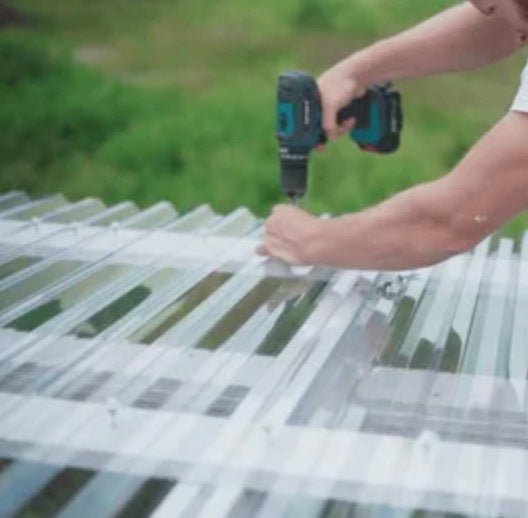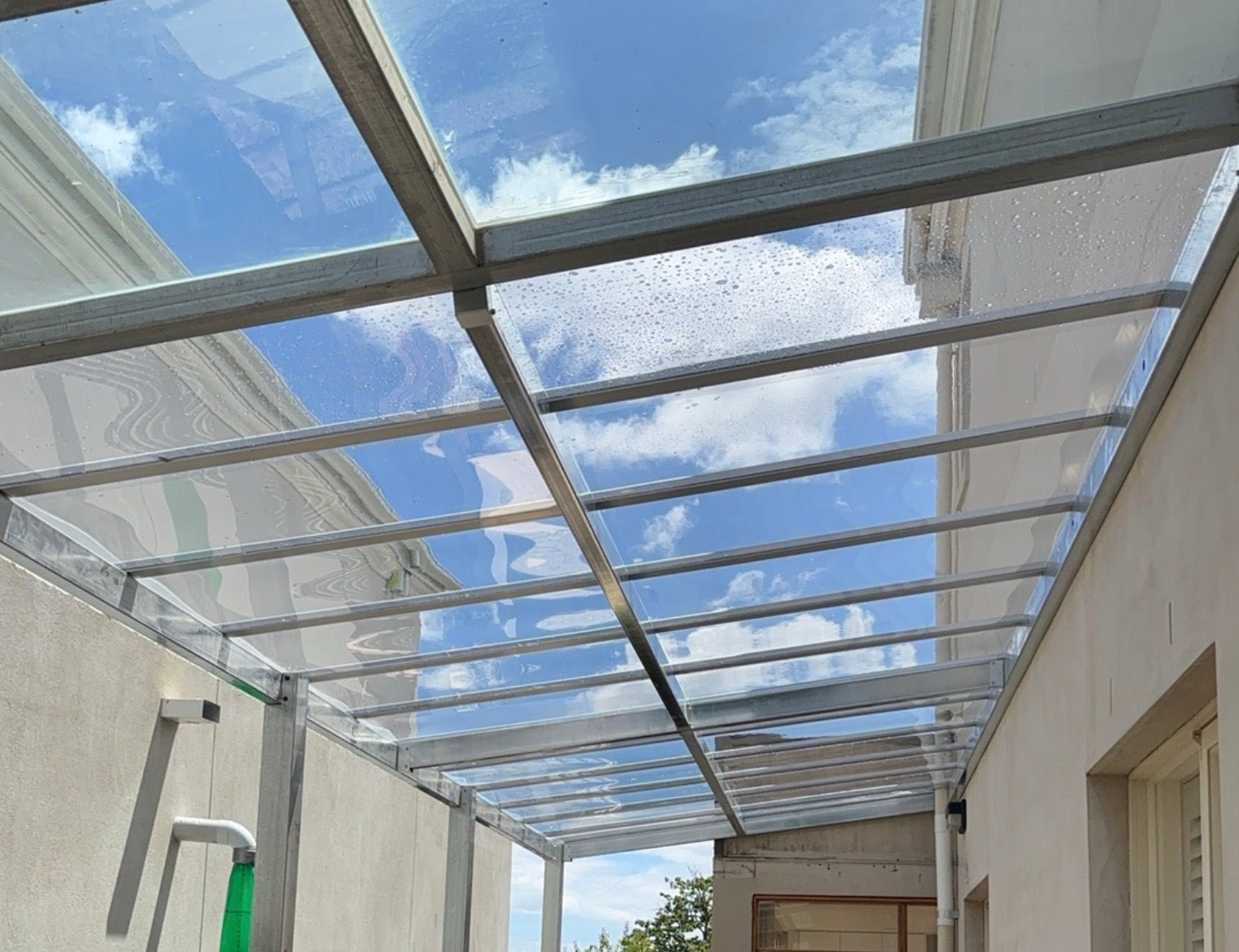Yes, polycarbonate sheet can be bent!
This flexibility makes polycarbonate as one of the most sought-after building materials. Unlike as glass or wood, which often come in fixed shapes, polycarbonate offers a whole new level of adaptability.
Whether you're employing hot or cold bending techniques, shaping polycarbonate roofing sheets opens up a world of creative and structural possibilities in modern architecture.

Curved Roof Advantages,
- More Roof Space
- Natural Drainage
- Architectural Appeal
- Natural Light and Ventilation
- Acoustic Benefits
So, you are wanting to bend polycarbonate sheet to make a curve shape?
But you worry about if it will break or crack? If it’s flexible enough? If polycarbonate sheeting can be bent, will it be strong enough for roofing for Melbourne weather? In this article we cover the key details about everything you need to know about bending polycarbonate sheet.
- Type of the plastic sheets you want to bend.
- How do you want to bend? Cold bend or head bend?
- What is the relationship with polycarbonate sheet thickness and curve radius?
- Things to avoid in bending polycarbonate sheet
- Effects of bending polycarbonate sheet
Type of the plastic sheets you want to bend.
In Excelite Plastic, we have the following type of polycarbonate sheet,
All most all of above material can be bent, but there are different curve radius.
Bending Flat polycarbonate sheet

Solid polycarbonate sheets are commonly used when a curved radius is needed due to their flexibility. They are incredibly strong, about 250 times stronger than glass of the same thickness, making them resistant to breakage. These sheets are highly durable and can withstand impacts, making them ideal for various applications such as bike shelters, bus shelters, smoking shelters, and children’s play areas. Unlike other plastics sheet, solid polycarbonate sheets do not fade or turn yellow over time, offering a long-lasting clear plastic solution.

Excelite polycarbonate roofing sheets are available in rolls, offering continuous length that can be customized to your specific dimensions. They can be cut to your desired length, and the width can be adjusted to match your rafter distance. This makes them an excellent solution for re-roofing projects, especially for pergolas, providing a glass-like appearance with added flexibility and customization options.
Bending Twinwall polycarbonate Sheet:
Multiwall or twinwall polycarbonate sheets offer a great alternative to solid sheets, boasting unique advantages. Their layered structure provides increased rigidity, particularly across the width, while still allowing flexibility for curving along the length. These sheets are popular for applications like greenhouses and polytunnels due to their thermal insulation properties, keeping the interior warm. Thinner sheets offer greater flexibility, allowing for tighter bending radius.


The internal structure also makes twin wall sheets more popular for use on greenhouses. Polytunnels and similar structures due to the thermal insulating qualities which ensure the inside of the structure stays warm.

Bending Corrugated Plastic Sheet
How to bend Excelite corrugated sheeting? This is the easiest material to bend due to its more flexible nature and thinner material. However, corrugated sheets can only be curved easily across the width of the sheet direction due to the corrugated profile. You can't bend the length way.
Corrugated polycarbonate sheets, while less rigid than solid or twin-wall polycarbonate types, are preferred for their versatile applications in outdoor settings like gardens, cold frames, and farming. Their distinctive ripple effect offers aesthetically pleasing designs, making them a popular choice for various projects.

Bending corrugated and embossed polycarbonate roofing sheets
Excelite corrugated and embossed polycarbonate roofing sheets is a 1.2mm thick material with smaller waves it’s more flatter, and flexible. The sheets itself coming in a roll. It’s very easy to transport, and you can cut to any length you want. It’s a very easy handle material.
And with corrugated and embssed polycarbonate roofing sheets, you can build a polytunnel greenhouse easily, and cost very friendly. And this material thickness is thicker than normal corrugated sheet or laserlite sheets, which is 0.8mm. So it’s a very strong material.

Types of Bending polycarbonate
There are two ways to bend plastic sheets: around sharp corners or along shallow curves.
When bending around sharp corners, heat and a press machine are needed to achieve the desired radius. Heat bending involves heating the plastic to a specific point and shaping it accordingly.
This article primarily focuses on cold bending for shallow curves, ideal for roof glazing applications. Cold bending allows polycarbonate sheets to bend around shallow curves following pre-curved roof structures, enhancing aesthetics and rigidity.
Cold bending involves securing the sheet to a curved structure using quality screw-down glazing bars, avoiding over-tightening beyond recommended radius. Thinner sheets can achieve tighter curves.
Cold bending eliminates the need for heating, making it convenient for on-site use and easy readjustment. It ensures accurate radius bending without the risk associated with heat bending.

Polycarbonate Sheet Thickness Vs Curve Radius
What is the minimum allowed bending radius of polycarbonate? The minimum allowed bending radius of the polycarbonate is 200 times the thickness of the sheet, for example, a 2 mm sheet has a minimum 400 mm bending radius.
Things to consider when bending a polycarbonate sheet
When it comes to planning your project or building your structure, you need to ensure that you have allowed for enough support under the sheets. This will then ensure that polycarbonate roofing sheets themselves are fully secure and have a rigid support system so there is no chance of the sheets springing back.
Optimal thicknesses for cold bending are 3-6mm for solid polycarbonate sheets and 10mm for twin wall polycarbonate. Thicker sheets may compromise flexibility and security. If uncertain, consult a structural engineer.
Effects of Bending Polycarbonate Sheets
Bending a polycarbonate sheet will make it more rigid. You will also find that when you bend a polycarbonate sheet the spanning strength is greater. You will need to remember that when curving a polycarbonate sheet there will be more strain or stress which will put more pressure on fixings, like Aluminium H joiners, screws.
Bending a sheet can only safely be done with polycarbonate sheets that are made with virtually unbreakable resin, as this ensures the sheets won’t crack when pressure is put on them to create the curve.
Quality glazing bars will be required to make sure the sheets stay in place and at the desired radius. This can be achieved by using an aluminium glazing bar system. The aluminium H joiner can also be bent to a radius when screwed down to the sub-structure as they will follow the curve around when screwed down. By using these bars, you can ensure that the sheets are firmly secured onto the structure.
Place Your Order Today – SWIFT Melbourne Metro Delivery, Free Returns & Flexible Payment!




2 comments
George
Information on polycarbonate sheets
Information on polycarbonate sheets
Josh M
Are the polycarbonate sheets at 4mm thick suitable for automotive windows ? How are they in terms of scratch resistance?
Are the polycarbonate sheets at 4mm thick suitable for automotive windows ? How are they in terms of scratch resistance?